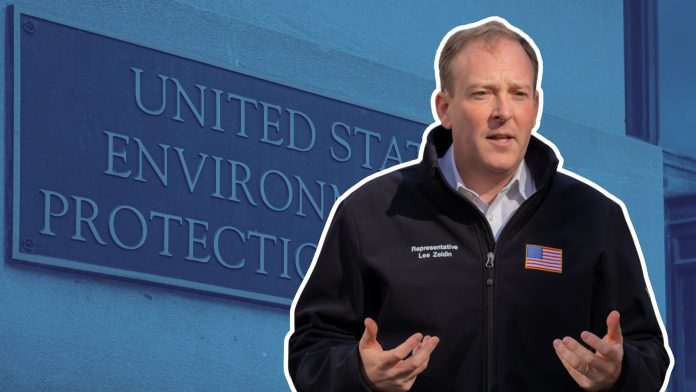The U.S. Environmental Protection Agency (EPA) announced plans to reconsider vehicle emissions regulations set by the Biden administration, potentially reversing rules that push automakers to increase electric vehicle (EV) production. This move aligns with broader efforts by the Trump administration to undo policies aimed at accelerating EV adoption.
The EPA’s review targets its 2024 regulation, which mandates a nearly 50% reduction in passenger vehicle fleetwide tailpipe emissions by 2032 compared to 2027 levels.
Compliance with this rule was expected to require EVs to account for 35% to 56% of new vehicle sales between 2030 and 2032, a target supported by automakers like Ford. The agency is also reconsidering a 2022 regulation aimed at significantly cutting smog- and soot-forming emissions from heavy-duty trucks, citing concerns over increased costs for truck manufacturers.
The 2022 standards, which were 80% stricter than previous regulations, were projected to prevent up to 2,900 premature deaths annually, reduce 1.1 million lost school days for children, and generate $29 billion in annual net benefits. Despite these benefits, the EPA is now reassessing the rule’s economic impact.
In February, the Biden administration approved California’s plan to phase out gasoline-only vehicle sales by 2035. Although Congress reviewed the decision, a government agency recently ruled that it cannot be repealed. Meanwhile, lawmakers are considering repealing federal EV tax credits, further complicating the future of EV incentives.
In a separate rollback, Transportation Secretary Sean Duffy has moved to rescind Biden-era fuel economy standards and halted funding for state-level EV charging infrastructure. The National Highway Traffic Safety Administration (NHTSA) previously raised fuel economy requirements to 50.4 miles per gallon by 2031, up from the current 39.1 mpg. This regulation was projected to cut gasoline consumption by 64 billion gallons through 2050 and reduce emissions by 659 million metric tons, with estimated net benefits of $35.2 billion. However, Duffy has directed NHTSA to reconsider fuel efficiency rules for heavy-duty pickup trucks and vans through 2035.
As the EPA, NHTSA, and Congress revisit these policies, the regulatory landscape for emissions, fuel economy, and EV adoption remains uncertain, shaping the future of the automotive industry.



